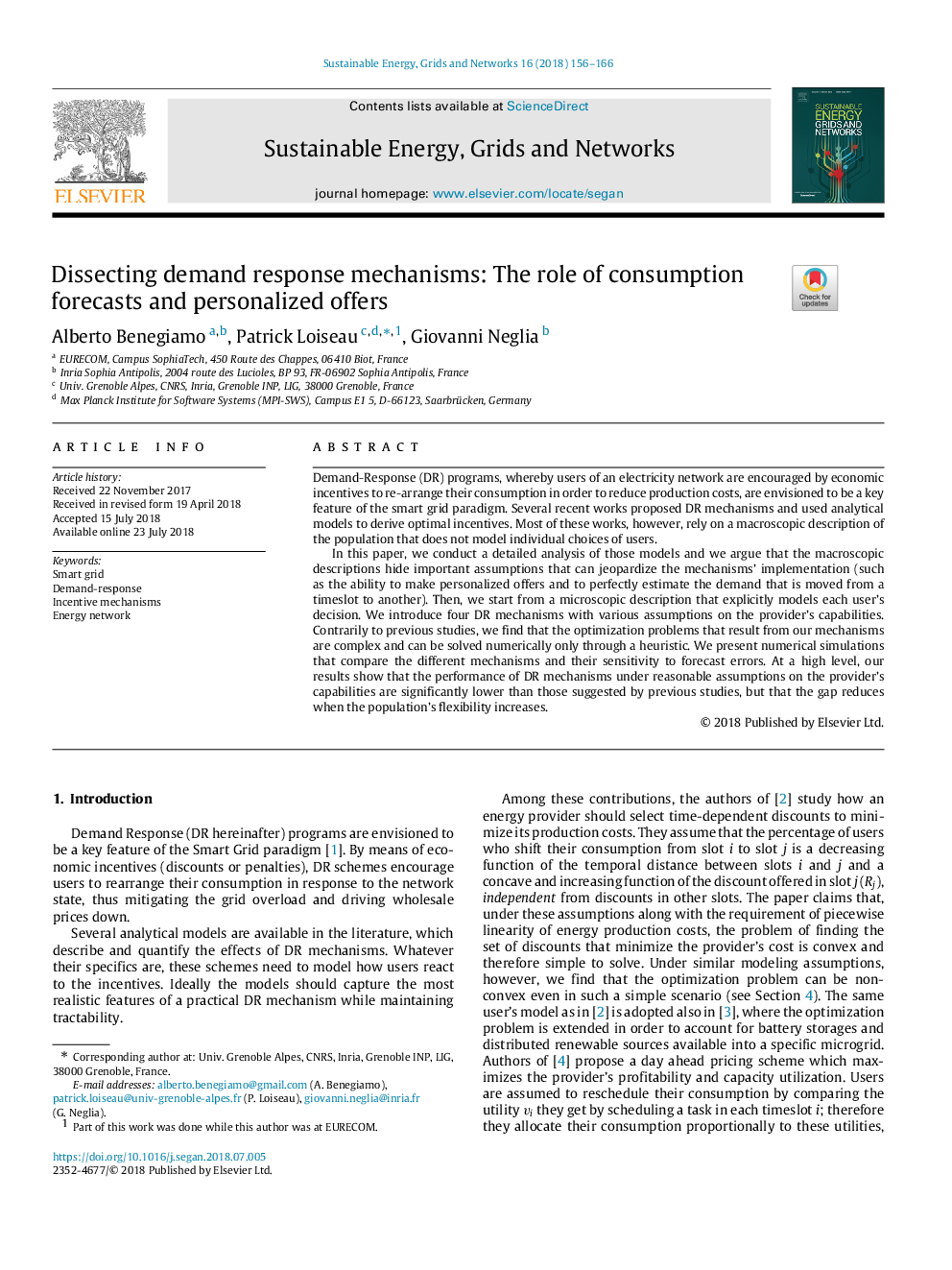| Article ID | Journal | Published Year | Pages | File Type |
|---|---|---|---|---|
| 6935391 | Sustainable Energy, Grids and Networks | 2018 | 11 Pages |
Abstract
In this paper, we conduct a detailed analysis of those models and we argue that the macroscopic descriptions hide important assumptions that can jeopardize the mechanisms' implementation (such as the ability to make personalized offers and to perfectly estimate the demand that is moved from a timeslot to another). Then, we start from a microscopic description that explicitly models each user's decision. We introduce four DR mechanisms with various assumptions on the provider's capabilities. Contrarily to previous studies, we find that the optimization problems that result from our mechanisms are complex and can be solved numerically only through a heuristic. We present numerical simulations that compare the different mechanisms and their sensitivity to forecast errors. At a high level, our results show that the performance of DR mechanisms under reasonable assumptions on the provider's capabilities are significantly lower than those suggested by previous studies, but that the gap reduces when the population's flexibility increases.
Related Topics
Physical Sciences and Engineering
Computer Science
Computer Science Applications
Authors
Alberto Benegiamo, Patrick Loiseau, Giovanni Neglia,
